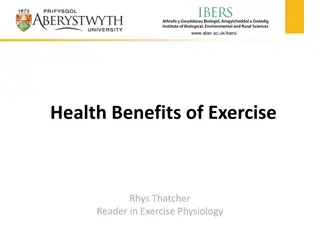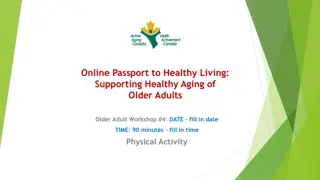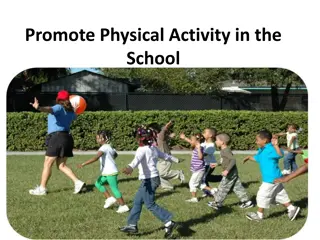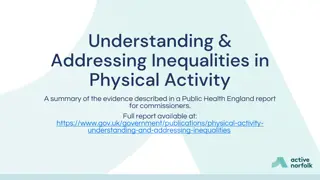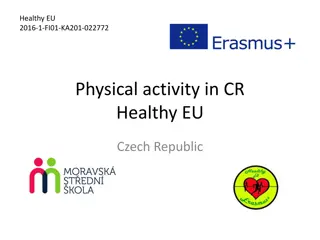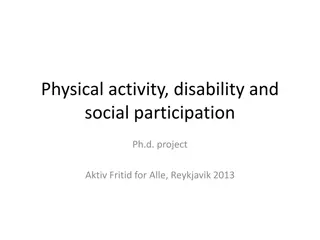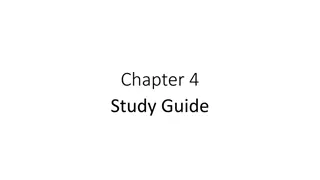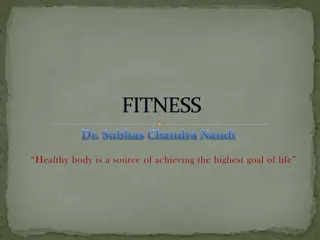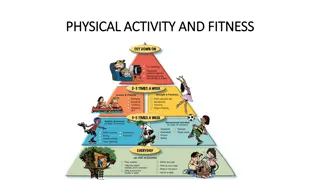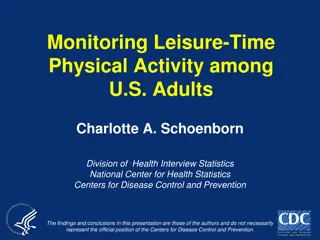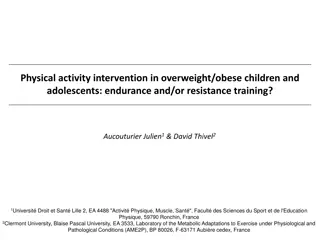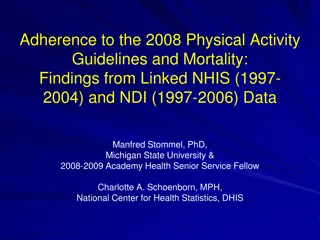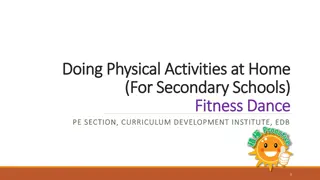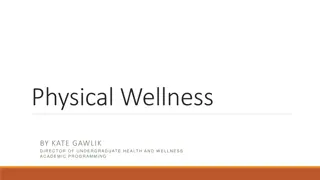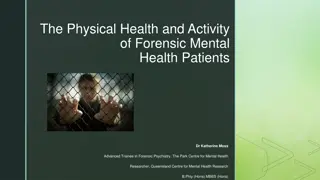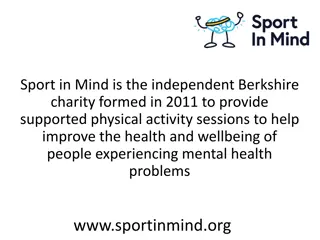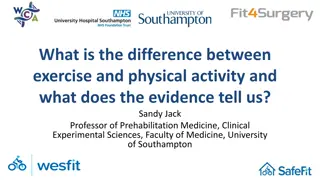Benefits of Physical Activity and Health Guidelines
Physical activity is essential for overall health, with benefits including decreased risk of cardiorespiratory disease, improved bone and musculoskeletal health, weight management, brain health improvements, and reduced anxiety. Guidelines recommend 150-300 minutes of moderate activity per week, emphasizing the importance of movement for health and well-being. Sedentary behavior should be minimized, and various movement patterns can be practiced to enhance physical fitness.
Download Presentation

Please find below an Image/Link to download the presentation.
The content on the website is provided AS IS for your information and personal use only. It may not be sold, licensed, or shared on other websites without obtaining consent from the author. Download presentation by click this link. If you encounter any issues during the download, it is possible that the publisher has removed the file from their server.
E N D
Presentation Transcript
Physical Activity and Health How much is enough to get the benefits?
Physical Activity is Essential What really counts as Physical Activity? Answer: Anything that gets your body moving and is safe for the individual. How much do I really have to do? Answer: As much as possible, but if you need a number 150-300 minutes of moderate activity per week. How long till I see results? Answer: Research show some benefits are immediate (acute) and other s take time (habitual).
Benefits of Physical Activity Decreased risk of Cardiorespiratory Disease Most extensively researched benefit Increased Bone and Musculoskeletal Health Helps with many of the activities of daily living Cadiometabolic Health and Weight Management
Physical Activity and Brain Health Long Term (Habitual) Benefits Reduced feeling of trait anxiety Deep Sleep Improvements in Executive Function Decrease Risk of Dementia in adults Acute Benefits Reduced feeling of state anxiety Improved sleep Improved aspects of cognitive function Helpful for Brain Fog
Sedentary Behavior Graph from: Physical Activity Guideline for Americans 2nd Edition, Department of Health and Human Services U.S.A.
Getting Started Finding movement that is right for you All movement counts reduce sedentary behaviors Health benefits are not the only reason for increasing everyday movement.
Movement Pattern Practice Squat Lower body exercise which includes a hip- hinge and knee bend while keeping you core tight. Deadlift Lower body exercise with focus on back and core strength Push-up Upper body exercise with focus on chest, shoulder, and arms. Lunge Lower body exercise with focus on directional movement
Movement Pattern Practice Rotation Upper body movement with focus on movement of the core and spine from side to side. Pull (Row) Upper body exercise focused on upper/mid back, arms, and shoulders. Plank Full body exercise focused on core strength. Combinations - often we combine 2 or more of these movement in every day life.
Remaining Active FITT Principle Frequency How many days of structured movement? Intensity How hard am I working? Time How long are my structure movement sessions Type What am I doing? (mode of movement)
Designing a Plan SMART goals Specific Measureable Achievable Relevant Time Specific



